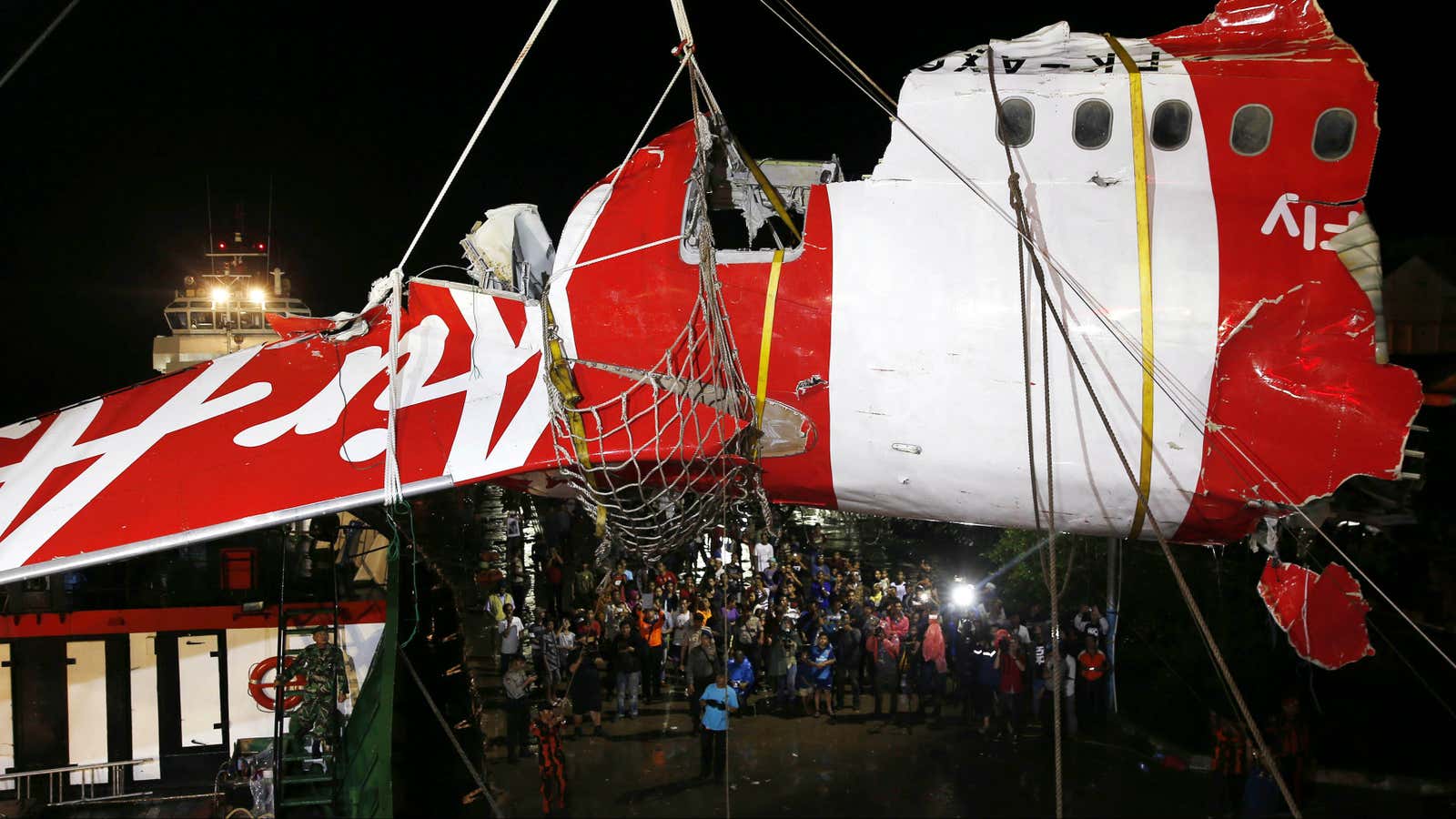Despite several high-profile crashes over the last two years, flying remains the safest form of travel. Data from the Bureau of Aeroplane Accident Archives show, with the exception of a minor spike in 2014 (a result of the Malaysia Airline crashes), plane crashes have fallen year on year over the last three decades.
The future of aviation safety relies on comprehensive, effective training and new, up-to-date fleets of planes. There’s no shortcut, no magic piece of technology or equipment. As Boeing and Airbus continue to bring new models to the market like the 787 and the A380, safety will improve. But can aviation safety levels improve so much that air crashes will soon be a thing of the past?
Professor Graham Braithwaite, director of transport and professor of safety and transportation at Cranfield University in the UK, explains that the two biggest threats to the future of aviation safety are unsafe freight cargo (putting lithium batteries in the hold), and human error.
“Accidents have been down to human error for a long time—almost every accident will contain human failing. It’s a vulnerability,” Braithwaite tells Quartz.
Both of these issues can be addressed by increasing training opportunities for staff, something that most airlines around the world are putting a lot of money into. Thirty years ago, Japan Airlines was responsible for a crash which caused the most fatalities (512) in aviation history. As a result, the airline developed a center, described by the company as a “fortress of safety.” According to its website, the center was built to “confirm the importance of flight safety and to embed in our minds the lessons learned from this accident.” As well as a comprehensive library detailing every plane crash that’s ever happened, there are also frequent lectures on aviation safety and the wreckage of doomed flight Jal123 displayed as a reminder of what can happen when standards slip.
While training can help human error, it’s limited. “People often forget certain procedures. Training can reduce the likelihood of somebody making errors, but it’s some of the best people in aviation who make the mistakes,” Braithwaite says. He explains how nobody would expect a brand new pilot to be so good that they wouldn’t need supervision. “The worst mistakes are often caused by those with a lot of experience because their expertise isn’t challenged.”
Technological developments have done much to ensure that aircrafts remain as safe as possible when mistakes come down to human error. The biggest safety advance in aviation is the development of GPWS (Ground Proximity Warning System) and EGPWS (Enhanced Ground Proximity Warning System), devised by Donald Bateman. This is the equipment that tells a pilot if she’s approaching a mountain too quickly, or if the ground is coming up too fast.
Braithwaite thinks that in terms of lives saved, this is the biggest airline safety advance in the last 20 years. According to research from Honeywell (pdf), this technology has reduced the risk of a pilot crashing into a mountain from one in every 0.8 million flights to one in every 91 million.
Braithwaite explains how even with the best of intentions, “very old aircraft flying around the world” are another obstacle to airline safety. This is something that’s more difficult to fix. The world’s most dangerous airlines in terms of frequency of crashes and number of fatalities are found mainly in southeast Asia where airlines simply can’t afford to buy new aircrafts. Maintenance can also be a challenge for these airlines, as new aircraft parts are difficult to procure. And it’s not only aircrafts in developing countries that have maintenance issues. 787s have suffered fires caused by lithium batteries. Braithwaite explains how although the 787 is very safe, “when there’s such a radical change in technology, there are always new issues.”
But data are helping to alleviate some of them. Routine stats show whether approaches are being rushed, how quickly pilots react to air-traffic control, and the plane’s reactions to turbulence and air-pockets. When an airplane took off from the wrong runway at Bluegrass Airport in Lexington in 2006, the Federal Aviation Administration (FAA) reviewed 5.4 million incident records and found that over the last 20 years there had been “116 occurrences of wrong runway departures.” By analyzing the data, it was able to see whether the events had anything in common such as a complex airport design or the use of a runway for taxiing.
An end to airline crashes may well be a real possibility, but not until every fleet across the world is committed to modernization and fastidious training. For flying to remain the safest form of transport, aviation safety must constantly work out how to stay one step ahead.
